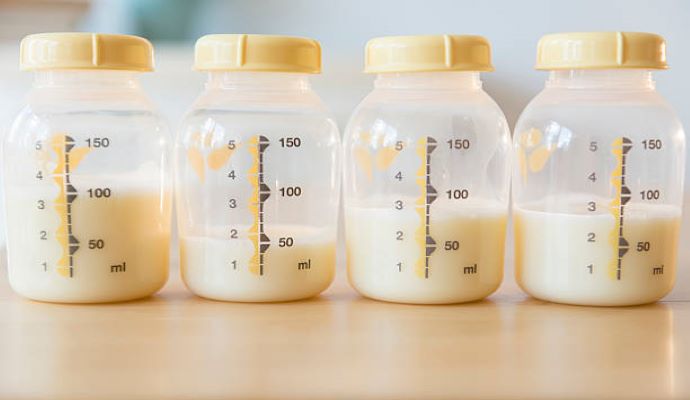Microplastics Detected in Human Breast Milk
In an article published in Polymers, clinicians at San Giovanni Calibita Fatebenefratelli Hospital detected microplastics in human breast milk for the first time.

Source: Getty Images
- As the climate change crisis progresses, plastics, specifically microplastics (MPs), increasingly threaten human health globally. Earlier this year, microplastics were found in the lungs, blood, and placenta. Most recently, researchers in Polymers detected microplastics in human breast milk. The study sampled breast milk from 34 individuals at San Giovanni Calibita Fatebenefratelli Hospital.
Researchers in the study state, “once internalized, microplastics may pass across cell membranes and translocate to different body sites, triggering specific cellular mechanisms. Hence, the potential health impairment caused by the internalization and accumulation of microplastics is of prime concern, as confirmed by numerous studies reporting evident toxic effects in various animal models, marine organisms, and human cell lines.”
This study analyzed breast milk samples collected from patients approximately one week after giving birth. Physicians in the OB/GYN department guided patients through manual expression to collect the samples properly.
Of the 34 samples collected, 26 contained microplastics (76%). Researchers took the study one step further by classifying the particles. According to the publication, the majority of microplastics found in the breastmilk were polyethylene, polyvinyl chloride, and polypropylene. The size of the particles ranged from ng to 2–12 µm.
Breast milk is considered the standard of nutrition for most newborns, which helps them build a functional immune system and stay on track for growth. Monitoring the presence of potentially harmful substances in breast milk may assist providers in tracking patient outcomes.
“The evidence of MPs in human breast milk, coupled with the previous discovery of these microparticles in the human placenta, represents a great concern since it impacts the extremely vulnerable population of infants. In fact, the chemicals possibly contained in foods, beverages, and personal care products consumed by breastfeeding mothers may be transferred to the offspring, potentially exerting a toxic effect. Hence, it is mandatory to increase efforts in scientific research to deepen the knowledge of the potential health impairment caused by MP internalization and accumulation, especially in infants, and to assess innovative, useful ways to reduce exposure to these contaminants during pregnancy and lactation,” concluded the researchers in the publication.
While these results are from one facility in Italy, it is thought that a similar study at other locations would yield the same results. The United States produces more plastic waste than any other nation, meaning the risk of plastic detection in breast milk in the US could be higher than 76%. To reduce the risk, efforts must be made to address this public health crisis.
Although scientists have been concerned about the possible harmful effects of MPs for many years, little research has been done to assess the risk MPs pose to human organs and issues.
